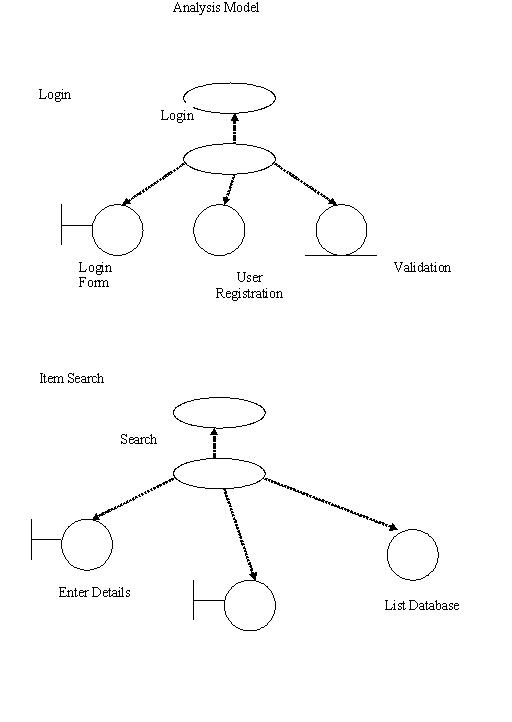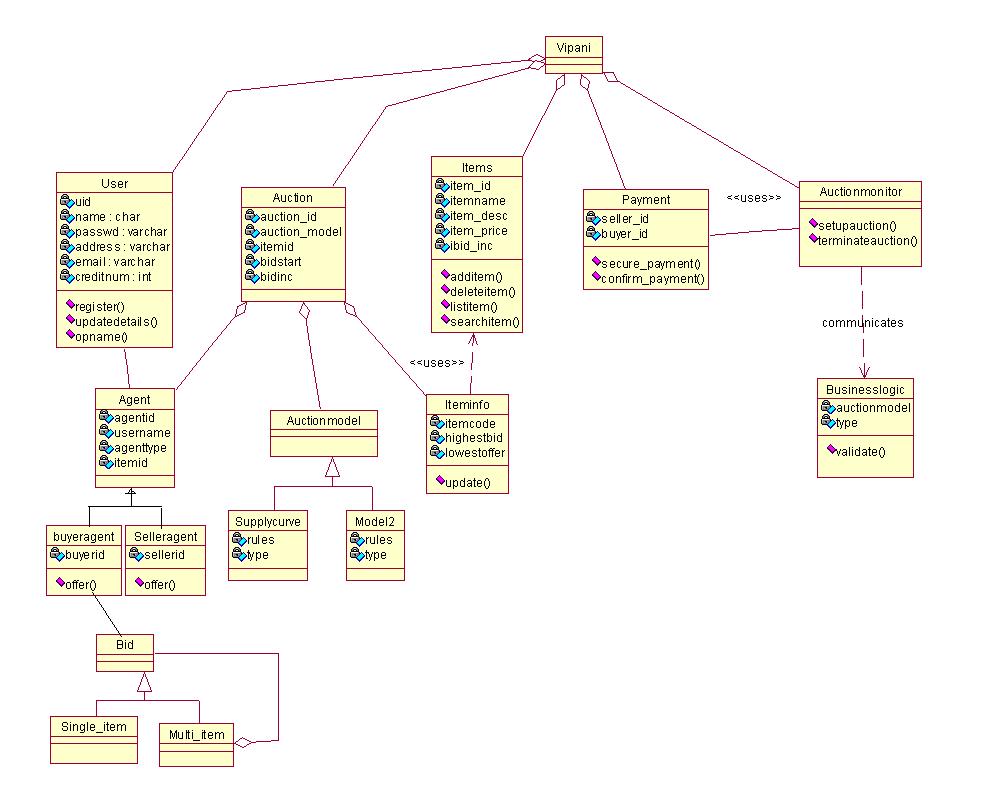An analysis model builds upon the key use cases identified in the Use case model and the Collaboration diagrams. This phase works more towards towards the Design.
This is done with the help of various diagrams like the Abstractions, Class diagram, Activity diagram for important business processes , State chart; diagram for interesting objects.
1 Abstractions for the use cases that have been shown are:

2 Use case realization for identified use cases
Each of the use cases along with its abstractions are analyzed further via the
sequence and collaboration diagrams, Ultimately discovering the active,
persistent, boundary, entity and control classes, which are listed below. This
is known as use case realization.
| |
active classes |
boundary classes |
entity classes |
control classes |
2.1 Monitor Auction
|
seller agent
buyer agent |
|
Business rules |
validate bid/offer
notify
system |
2.2 Set up auction
|
seller agent |
IEnter Details
IOutput Details |
Business Rules
Item Database |
validate bid/offer |
2.3 place the Bid
|
buyer agent |
IEnter Details
IOutput Details |
Business Rules
Item Database |
validate bid/offer |
2.4 Auction match |
buyer agent
seller agent |
|
Business Rules
Item Database |
validate bid/offer |
3 class diagram
First all the possible classes are
identified. They are
user , seller ,buyer, auction , bid, auction
monitor , auction model ,agent ,item ,payment ,search
The detailed class diagram obtained in an iterative manner is as shown below
click on the image to enlarge the image

 Gopinath
Narendra U.P
Back
Gopinath
Narendra U.P
Back
 Gopinath
Narendra U.P
Back
Gopinath
Narendra U.P
Back